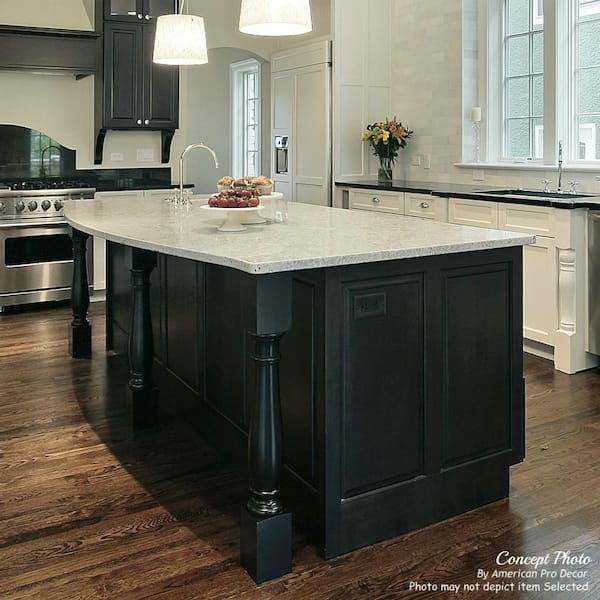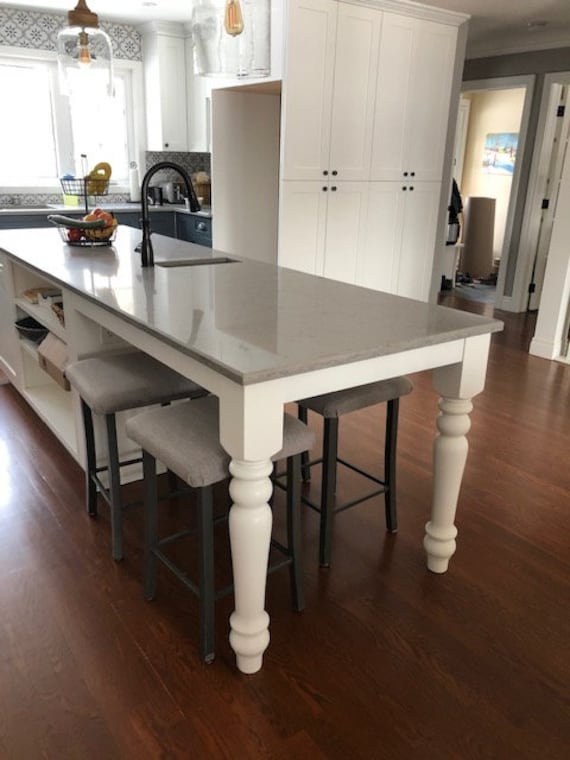Stylish Kitchen Island Legs: Raise Your Kitchen Layout
Stylish Kitchen Island Legs: Raise Your Kitchen Layout
Blog Article
Essential Tips for Selecting the Perfect Dining Table for Your Cooking Area
Choosing the excellent eating table for your kitchen area is greater than just a matter of taste; it demands an extensive understanding of your space and needs. Begin by determining your readily available space to ensure enough clearance for movement. The shape of the table plays a crucial duty; while rectangle-shaped tables fit larger areas, rounded ones foster intimacy, and extendable alternatives offer versatility. Product choice is similarly important, with woods providing longevity and glass lending a modern-day touch. The table must integrate with your kitchen area's looks and fit your family comfortably. What other variables might influence this important decision?
Action Your Area
Picking the ideal dining table begins with a meticulous evaluation of your offered area. This fundamental step guarantees that the table not only fits easily within the space but additionally complements the overall design and capability of your eating area.
It is vital to leave adequate area for chairs to be pulled out and for people to move around the table without blockage. A general guideline of thumb is to allow at least 36 inches of clearance from the edge of the table to the local wall surface or item of furniture.
Furthermore, think about the variety of individuals you commonly delight and whether you require added space for guests. Choosing for an extendable table can provide flexibility, permitting you to fit varying varieties of restaurants. By accurately measuring your space, you prepared for choosing a table that improves both the aesthetics and performance of your dining area.
Pick the Right Forming

On the other hand, round tables are outstanding for smaller kitchen areas or intimate celebrations, as they promote discussion by allowing everybody to deal with each other. They also offer a feeling of coziness and can fit well in tighter areas because of their absence of sharp corners. Oval tables supply the most effective of both worlds, integrating the size of rectangular tables with the affection of round ones, making them functional for various settings.
Square tables are another alternative, particularly fit for square-shaped spaces. They produce a modern and symmetrical appearance, promoting an equal eating experience for all seated. Nevertheless, they might be less useful for bigger gatherings unless they include expansions. Ultimately, the shape you choose should straighten with your space measurements and way of living to ensure both type and feature.
Product Factors To Consider
When choosing an eating table, product factors to consider are paramount in determining the table's sturdiness, upkeep requirements, and general aesthetic. Timber is a traditional option, providing classic allure and robustness.
Glass-topped tables offer a modern, streamlined appearance and can make a room appear bigger as a result of their openness. Nevertheless, they require frequent cleaning to protect against smudges and finger prints. Furthermore, toughened up glass is recommended for its additional toughness and safety.

Lastly, composite products like MDF (Medium-Density Fiberboard) or plywood are economical options. These products can imitate the look of solid wood however might not use the same durability. They are normally less complicated to tidy however can be at risk to water damages otherwise appropriately secured.
Ultimately, the option of material need to align with your cooking area's design, your lifestyle requires, and your budget restraints. (kitchen island legs)
Seating Capacity and Convenience
How do you identify the appropriate seating capability and convenience for your eating table? For a family of you can look here 4, a rectangle-shaped table of 48 inches long or a round table with a 48-inch diameter is normally sufficient.
Convenience is similarly essential. The height of the table need to preferably be around 30 inches, providing a well balanced ergonomic position for seated diners. Chairs need to sit elevation of 18 to 20 inches to guarantee a comfortable eating pose. In addition, think about the chair style; upholstered seats and helpful back-rests can enhance eating convenience considerably, specifically during extended meals.
Style and Appearance
Picking a table that matches your style and appearance includes stabilizing individual taste with the existing design of your eating space. The eating table is usually the focal point of the kitchen, and its design needs to match the total style of the room. Whether your kitchen boasts a modern-day, minimal look or a rustic, farmhouse appeal, the table you select need to harmonize with these aspects to develop a cohesive and welcoming ambience.
Consider products thoroughly; timber offers an ageless allure and can vary from abundant mahogany for a standard want to lighter oak for a contemporary feeling. Steel and glass tables, on the other hand, can introduce a smooth, industrial edge to your kitchen. Do not ignore the table's shape-- rectangular tables are flexible and traditional, while round and oval options can cultivate a more intimate dining experience.
In addition, pay attention to information and finishes. A distressed coating might add personality and warmth, whereas a glossy surface area can contribute to a tidy, contemporary visual. Eventually, your eating table should not just in shape seamlessly into your cooking area's design but also show your individual style, elevating the room both functionally and aesthetically.
Verdict
To conclude, choosing the excellent dining table for a kitchen area requires cautious examination of space, shape, product, seating capacity, and aesthetic consistency. Making certain a minimal clearance of 36 inches promotes comfy motion, while the selection of shape improves spatial dynamics. Product choice effects durability and layout, making it critical to align with the cooking area's general visual. Eventually, an appropriate eating table cultivates an inviting ambience and fits the household comfortably, therefore boosting the eating experience.

When choosing a dining table, product considerations are extremely important in figuring out the Read More Here table's longevity, upkeep requirements, and overall visual. For a family members of four, a rectangle-shaped table of 48 inches long or a round table with a 48-inch diameter is generally sufficient.
Don't forget the table's form-- rectangular tables are functional and traditional, while round and oval webpage alternatives can cultivate a much more intimate eating experience. kitchen island legs.
Report this page